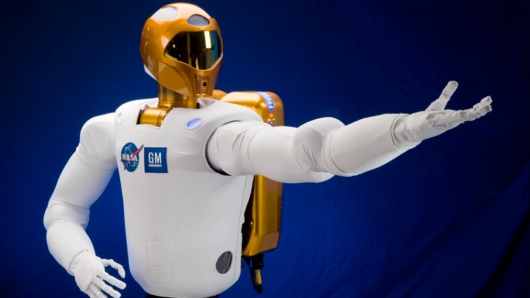Science News
R2 and World Destruction

Robonaut, 3D research and destroying the world: we’re dishing out cool science tech news from the past week.
The final launch of the space shuttle Discovery has been postponed until the end of the month, so Robonaut 2 (or R2) will stay Earth-bound a little bit longer according to his tweet this morning (@AstroRobonaut). But R2 is not just for tweeting-- It “is a state of the art, highly dexterous anthropomorphic robot,” according to its website, designed to help astronauts in their daily tasks on this launch of Discovery.
That’s not all that’s heading up when the shuttle finally gets the all-systems-go—two small LEGO shuttles with astronauts will be part of the mission as well as freeze-dried and packaged “ginger-lacquered short ribs with pea puree, pickled mushrooms and horseradish crème-fraiche,” the prize-winning, space-aged recipe concocted on TV’s “Top Chef” just for this mission
These won’t be ready in time for the new launch date, but we’re looking forward to them in the future: super-tight, superhero-like spacesuits. These aren’t just for looks. Apparently, in space, the lack of gravity is tough on the bones.
Here on Earth, our legs bear most of our weight. These newly MIT engineered suits are designed to mimic this. From New Scientist:
Made of an elastic material, the suit is deliberately cut too short for the wearer, and has stirrups that wrap around the feet so that it stretches when the wearer puts it on. The elasticity of the stretched material then pulls the wearer's shoulders towards their feet just as gravity would.
Ugh. The return of stirrup-pants.
In 1977, in a galaxy far, far away, a robot could project a 3D image of a princess calling for help. Here on Earth, we’re finally catching up. The research was published this week in Nature and a supporting article has some of the details:
The team's system captures 3D information by filming an object from multiple angles, using 16 cameras that each take an image of the object every second. The 16 views are processed into holographic pixel data by a computer, which sends a signal to two pulsed laser beams that then write the data into the recording material.
During the writing process, the two beams combine to create an interference pattern of light and dark patches in the recording material. Firing another light at the pattern reconstructs the 3D image.
We’re not there yet, but eventually, scientists hope that, according to Scientific American:
…these real-life holograms could one day be broadcast live from one place to another, enabling more lifelike videoconferencing or even telesurgery.
Finally, having a bad day? Why not take it out on the world? Just go to the Impact Earth website, create a comet or asteroid, send it toward our planet and watch the destruction. Actually, the lack-thereof may surprise you. But don’t be disappointed. The science is super-cool. From Science NOW:
The Web site also provides data on the aftermath, including the size of the crater, the extent of the fireball, and even the height of the tsunami wave, should the object crash into the ocean.
Now go have some fun!